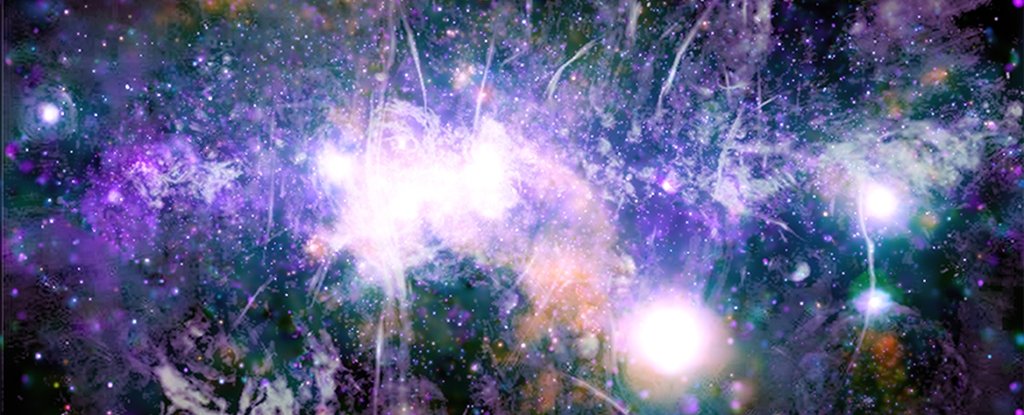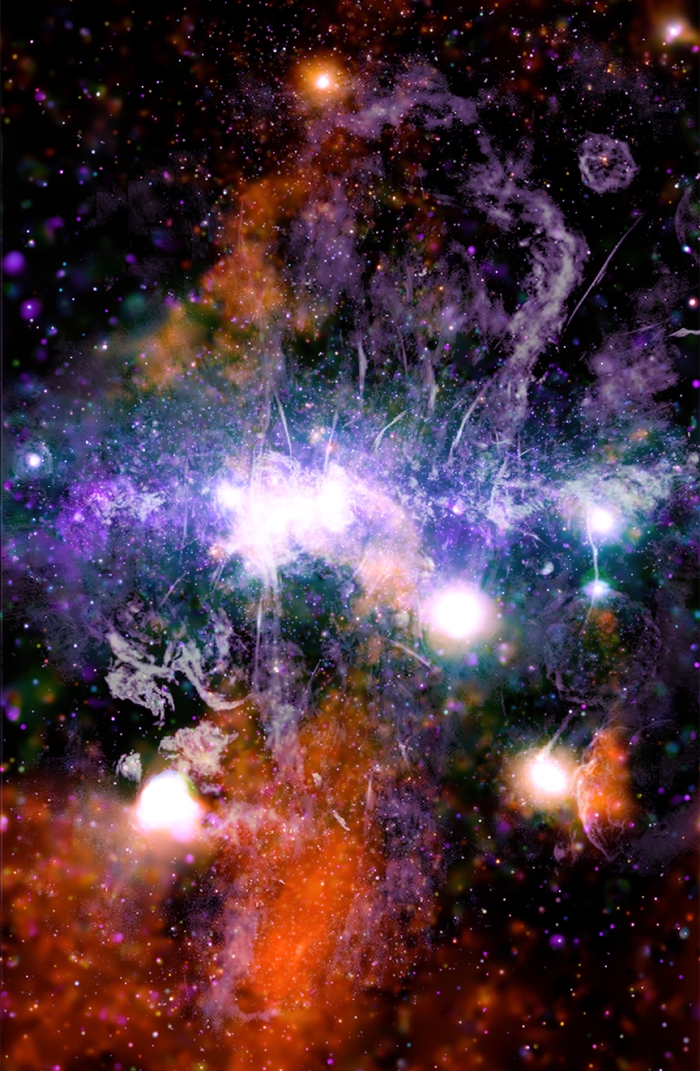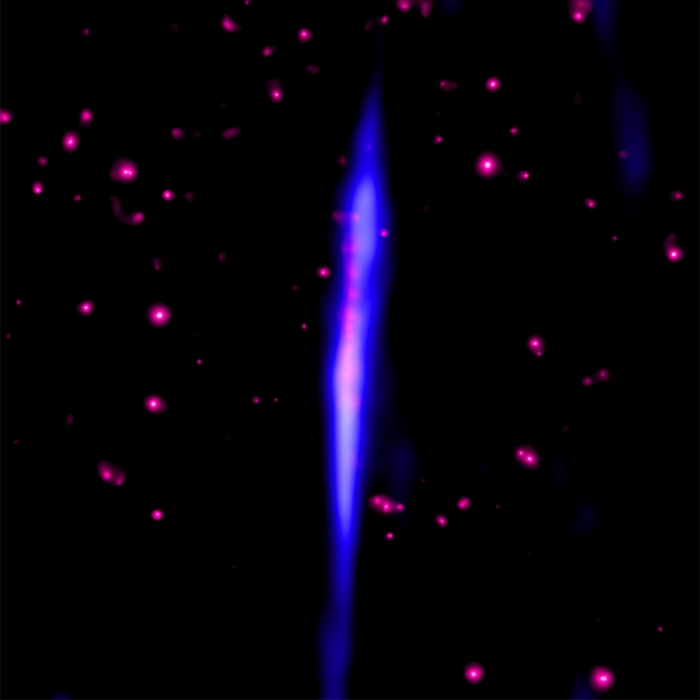
Posted on 05/28/2021 8:20:46 AM PDT by Red Badger

(NASA/CXC/UMass/Q.D. Wang; NRF/SARAO/MeerKAT) SPACE -------------------------------------------------------------------------------
The center of the Milky Way is a strange and wild place.
There dwells our galactic nucleus - a supermassive black hole 4 million times the mass of the Sun, a beast named Sgr A*. It's probably the most extreme environment in our galaxy, dominated by Sgr A*'s gravitational and magnetic fields.
It's also very hard to see into, even though it's only 25,800 light-years away: The region is shrouded by thick clouds of dust and gas that obscure some wavelengths of light. But if we use technology to tweak our vision into the invisible wavelengths, beyond the narrow capabilities of our eyes, we can begin to see some of the strange processes taking place therein.
Using the powerful Chandra X-ray Observatory space telescope and the MeerKAT radio telescope, astronomers have given us just such a view. They have combined these images for a panoramic mosaic that shows superheated gas threads and magnetic fields in "unprecedented" detail.
And, in a new paper, astronomer Daniel Wang of the University of Massachusetts Amherst has described these features in detail - including one particularly intriguing thread that glows brightly in both X-ray and radio wavelengths, intertwined.
"This thread reveals a new phenomenon," Wang said. "This is evidence of an ongoing magnetic field reconnection event."

(NASA/CXC/UMass/Q.D. Wang; NRF/SARAO/MeerKAT)
The entire image is fascinating. X-radiation is depicted in orange, green, blue and purple, representing different energies, and the radio wavelengths in gray and lilac. Above and below the galactic plane, two huge plumes of gas extend 700 light-years.
The southern one appears to be associated with the giant radio bubble only just discovered in 2019, thought to be the result of recent activity by Sgr A* (not to be confused with the much larger Fermi bubbles or eROSITA bubbles).
The fascinating gas thread, named G0.17-0.41, appears in the southern lobe - a long, slender structure 20 light-years long, but only 0.2 light-years wide.
The X-radiation is embedded within a radio filament, and its profile suggests that radio filament is a magnetic field. The shape and spectral properties of these associated elements suggest that the thread is the result of magnetic reconnection - a violent event that occurs when magnetic field lines aligned in opposite directions collide, break apart, and reconnect.

G0.17-0.41. (NASA/CXC/UMass/Q.D. Wang; NRF/SARAO/MeerKAT)
During this process, which rearranges the magnetic field, magnetic energy is converted into kinetic energy and heat. Usually, though, this process isn't energetic enough to produce X-rays - but magnetic fields in the galactic center are much more powerful.
The filaments' location on the edges of the bubbles suggests that the magnetic reconnection may be triggered by collisions between clouds of gas. As material is pushed away from the outburst at the galactic center, it collides with gas in the interstellar medium, which in turn triggers the reconnection.
This could be partially responsible for heating the gas in the region, and suggests some interesting implications. Because most reconnection events will be too faint, or too diffuse in X-rays to be detected by our current methods, it's likely that G0.17-0.41 represents "only the tip of the reconnection iceberg in the galactic center," Wang wrote in his paper.
VIDEO AT LINK...........................
Because reconnection events may play a role in heating interstellar plasma, the acceleration of cosmic rays, interstellar turbulence and the formation of interstellar structures, he believes that filaments like G0.17-0.41 may be an excellent laboratory for understanding the physics of interstellar magnetic reconnection.
"The galactic center is a truly complex system, involving not only interplay among various stellar and interstellar components, plus Sgr A*, but also inflows and outflows, multiple energy sources, as well as heating and cooling mechanisms," he wrote.
"A comprehensive study of the galactic center with this complexity will require truly a multi-wavelength approach, together with dedicated theoretical and computer simulations. Ultimately, what we learn from the GC ecosystem and its connection to larger scale structures will provide us with insights into the working of similar extreme regions in other galaxies."
The research has been published in the Monthly Notices of the Royal Astronomical Society:
https://academic.oup.com/mnras/article-abstract/504/2/1609/6255245
---------------------------------------------------------------------
But a "newly observed phenomenon" is an entirely different matter ....
Well, Space-time is there only when you observe it..........................
“Orphans”. It is a mathematical certainty given the number of inter and intra galactic stellar flybys in the universe over the billions of year.
The Theory is that yes, everything will be come chaos (black holes are pockets of chaos) until the final cool down and freeze. Once that happens, there is the nothing of perfect chaos, until there is a quantum event that starts things all over again. I think the theory is pointing out that there is no difference between the perfect order at the beginning and the perfect chaos at the end, quantum mechanically speaking.
A slight wobble or orbit deviation of any of our neighboring planets will be all it takes to doom Earth. A universe that collapses back is not the worry. Move the balance of gravity slightly and its over.
A "universe that collapses back" was the prevailing point of view at one point, and the idea does have a certain symmetry, but evidence now points to a universe that is not only continuing to fan out (into what is another question), and is in fact accelerating as time goes on. I don't adhere to the theories about 'dark' matter and 'dark' energy ad nauseaum; there has to be another explanation. But the phenomenon is both real and measurable.
One of the most intriguing aspects of this expansion is that it's velocity is not bound by the speed of light, since it is space itself that is expanding. Einstein's theories of spacetime are incomplete; as far as I know they do not address this particular phenomenon at all.
Ultimately, there's little we can do about it; we are simply along for the ride. And like everything else in the natural world, it doesn't require our understanding to function just fine.
Interesting article from today:
https://phys.org/news/2021-05-dark-energy-survey-precise-universe.html
The Glory of the Lord shines before us.
Imho.
5.56mm
All those pixels and they still can't get a good pic.................
And that's just the ones they can see!..................
Disclaimer: Opinions posted on Free Republic are those of the individual posters and do not necessarily represent the opinion of Free Republic or its management. All materials posted herein are protected by copyright law and the exemption for fair use of copyrighted works.